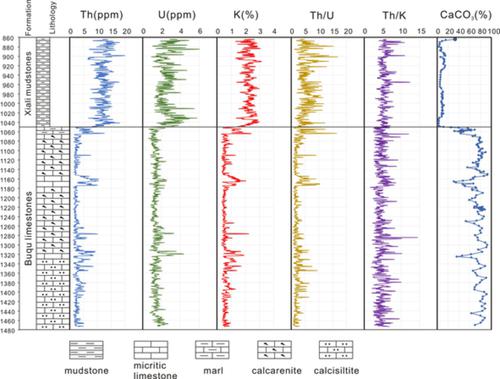当前位置:
X-MOL 学术
›
Geolog. J.
›
论文详情
Our official English website, www.x-mol.net, welcomes your
feedback! (Note: you will need to create a separate account there.)
Demise of the Middle Jurassic carbonate platform: Responses to sea‐level fall in the Qiangtang Basin, Eastern Tethys
Geological Journal ( IF 1.4 ) Pub Date : 2020-07-23 , DOI: 10.1002/gj.3923 Yuan Gao 1, 2, 3, 4 , Xiugen Fu 5 , Yi Li 6 , Youli Wan 3, 4 , Zhongwei Wang 5 , Chunyan Song 3, 4 , Hualiang Shen 3, 4 , Fei Lin 1, 3, 4
Geological Journal ( IF 1.4 ) Pub Date : 2020-07-23 , DOI: 10.1002/gj.3923 Yuan Gao 1, 2, 3, 4 , Xiugen Fu 5 , Yi Li 6 , Youli Wan 3, 4 , Zhongwei Wang 5 , Chunyan Song 3, 4 , Hualiang Shen 3, 4 , Fei Lin 1, 3, 4
Affiliation

|
Many studies have been focused on the development of carbonate platforms, however, the controlling factors of their evolution are still unclear. The QTKT1 well, drilled in 2016 by the Chengdu Center of the China Geological Survey at the Northern Qiangtang Depression, has allowed further studies of Jurassic environments and resources in the Eastern Tethys. In this study, we investigate variations in spectral gamma‐ray logs and CaCO3 content and perform a cyclostratigraphic analysis in the Xiali mudstones and Buqu limestones and Xiali mudstone to analyse causes for the demise of the Middle Jurassic carbonate platform in the Qiangtang Basin. The concentrations of Th, K, U, and Th/U and Th/K ratios increase suddenly from the Buqu Formation to the Xiali Formation, suggesting increased terrigenous input and/or decreased carbonate production rates. Cyclostratigraphic analysis detects the existence of astronomical cycles and an abrupt change in sediment accumulation rates within the target intervals. Combined with sedimentary facies analysis, our research suggests that the demise of the Middle Jurassic carbonate platform may have been caused by terrigenous detrital inputs into the Qiangtang Basin. High‐frequency sea‐level fluctuations increased terrestrial inputs and carbonate production rates at the orbital scale. The regression happened before the facies change and controlled terrestrial inputs at a larger scale, which resulted in the demise of the carbonate platforms. Contrary to the Western Tethys, a regression took place from the Bathonian to Callovian ages in the Qiangtang Basin, Eastern Tethys, which increased the exposure levels. The large exposure led to significant erosion, accelerated detrital input from the land to the Northern Qiangtang Depression, reduced carbonate production as well as resulted in the demise of the Buqu carbonate platform. The relative sea‐level fall is mainly the result of the regional tectonism during this period.
更新日期:2020-07-23











































 京公网安备 11010802027423号
京公网安备 11010802027423号